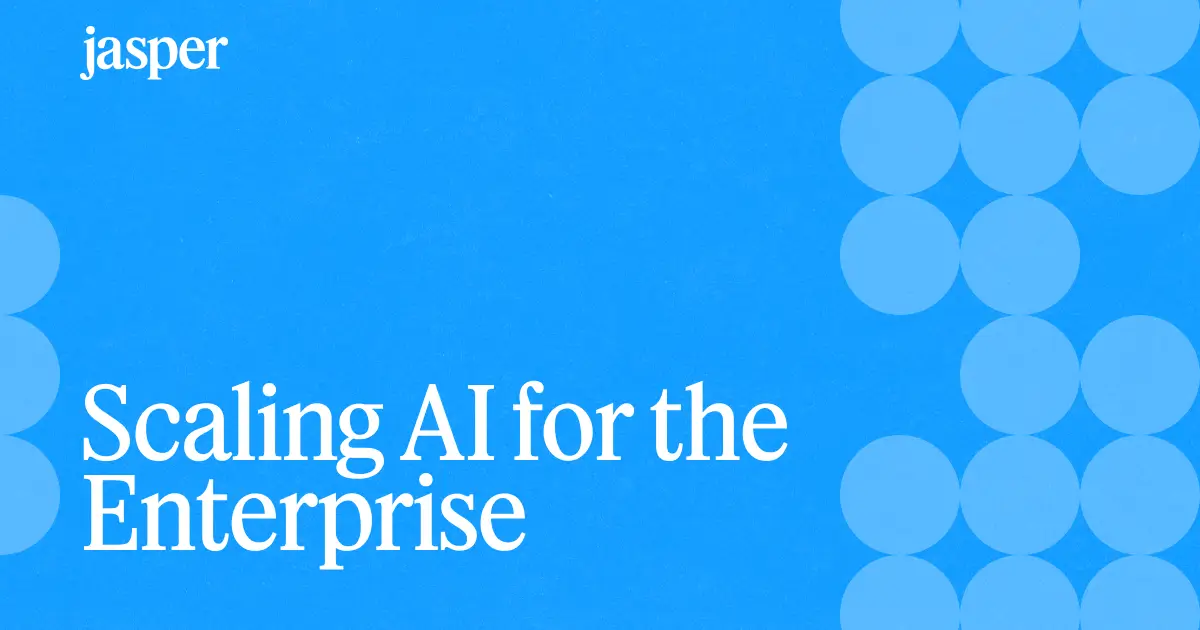5 Storytelling Templates to Spice Up Your Content Marketing
Learn about 5 storytelling templates that can help marketers create more impactful content. Plus, see a simple way to write engaging, compelling stories fast.

“A well-told story has the power to bring people together, while data and facts can drive them apart.” Will Yang, Head of Growth at Instrumentl said it best, continuing: “The human brain is wired to remember stories, not abstractions or numbers. Our brains use stories to make sense of the world around us, so we’re naturally drawn to them in the same way we're drawn to a good movie or book.
This is why narrative is so powerful in content marketing. A well-crafted story can be used as a vehicle for delivering information that might otherwise be difficult or dry for your audience to swallow.”
But…what if you don’t consider yourself a “good writer” or natural storyteller? Getting familiar with the elements of common storytelling templates can help you change that and incorporate more stories into your marketing.
Why storytelling is powerful in content marketing
Storytelling is a powerful tool in content marketing because it has the ability to captivate and engage audiences on a deeper level. By weaving a narrative, brands can create an emotional connection with their target audience, leading to increased brand loyalty and trust.
Stories also have a way of making information more relatable and memorable. When a message is delivered through a story, it resonates with people on a human level, making it easier for them to connect with the brand and its values.
Storytelling allows companies to differentiate themselves in a crowded marketplace. In a sea of similar products or services, a compelling story can set a brand apart and leave a lasting impression on consumers. By sharing stories that reflect their mission, values, and customer experiences, businesses can establish a unique identity that resonates with their audience, ultimately driving engagement and conversions.
Elements of a compelling story
When telling a narrative, it’s important to include all the core elements that readers can understand, connect with and hopefully remember for a long time. You should include characters that people can identify with, present a problem as well as the solution. After all, the core of every strong business is problem solving, so telling a story around problem solving shouldn’t be that much of a stretch.
- Characters: Introduce relatable characters that the audience can connect with. Characters add depth to the story and bring it to life.
- Conflict: Every good story needs conflict to create tension and keep the audience engaged. This can be a problem that the characters need to solve or an obstacle they must overcome.
- Resolution: The resolution provides closure to the story. It shows how the characters have grown or changed as a result of facing the conflict.
- Emotion: Infuse emotions into the story to evoke empathy and create a lasting impact on the audience.
- Authenticity: Authenticity is key to building trust with the audience. Share real experiences and emotions to make the story genuine and relatable.
- Call-to-Action (CTA): A compelling story should include a CTA that prompts the audience to take the next step, whether it's visiting a website, making a purchase, or sharing the story with others.
5 Storytelling templates you can use in content marketing
To get you started, here are five of the top frameworks for storytelling and a simple way to use them.
Storytelling template #1: Hypothetical story
Although hypothetical stories are fictional, they can still be a powerful tool for content marketers. For example, you could use:
- An outrageous hypothetical scenario to highlight something you and your audience agree on before sharing additional info or even contrarian takes on a topic
- A realistic hypothetical story about a goal, challenge, desire, fear, or characteristic of your target audience. The more they can relate to the story, the more engaging and powerful your content will be
Great for: Hypothetical stories work well for blog posts. For example, they can be used in introductions to set the stage for the topic you’ll cover. Or in conclusions, as a cliffhanger to encourage readers to read or download a more in-depth resource.
Storytelling template #2: Hero’s Journey
The Hero’s Journey is a tried-and-true template for getting an audience invested and mentally engaged in a story. In a nutshell, this approach to storytelling walks viewers step-by-step through a character’s journey toward success, including the trials along the way.
- The character typically feels compelled to find or achieve something greater in life.
- They find a path toward that goal—perhaps by chance—and begin a transformation of some sort.
- They encounter challenges that threaten to derail their mission but they overcome it—often with help from a mentor or guide
- By the end of the story, they’ve undergone a complete transformation. They’re stronger and wiser. And you’ve been rooting for them the whole way through.
Great for: The Hero’s Journey can be used for brand storytelling. Or, even better, to tell customer success stories and guide the layout of case studies.
(Just remember to position customers as the heroes and your company as the helper who guided them through daunting challenges. When readers see the parallels between themselves and the heroes in your stories, it builds confidence in their ability to reach their goals and in your ability to help them).
Storytelling template #3: Chronological story
The simplest and most common format for storytelling is just explaining what happened from beginning to end.
- First, you set the scene to give context on the main character of your story and their situation, progressively building up to a major turning point in the story.
- You continue by explaining important events that followed—good or bad—in chronological order.
- Finally, you wrap up with the end result that those events led to, preferably with a takeaway that’s relevant to the reader.
Great for: This straightforward style of storytelling is a good choice for telling your brand story (e.g. on your website’s About page).
Storytelling template #4: Before After Bridge
The Before After Bridge Framework—also known as BAB—shakes up the order of events. With it, you:
- Start from the beginning, much like with a chronological story. You lay the groundwork and give the backstory.
- Skip straight to the end to heighten curiosity about the bridge between the before and after of your story.
- Go back and fill in the gap in the middle.
This template is a smart choice to keep people interested and engaged. Especially if the bridge of the story holds the key to their own before and after success story.
Great for: The BAB storytelling framework is great for things like company news and announcements. And it can also help you create great teasers for your social media content. For example, you could share the before and after, and then drive traffic to a piece of content on your website, an email list, a podcast, or some other source for the full story.
Storytelling template #5: Metaphorical or analogous stories
Last but not least are stories based on metaphors (figures of speech) or analogies (comparisons). How are these useful in content marketing?
- An unexpected metaphor can be great for grabbing and holding attention. It’d get people interested in the explanation behind the metaphor or, at the very least, give them a vivid mental image of the topic you’re covering.
- A strategic comparison can help readers understand a topic quickly. Relating something your audience knows well to a concept they’re less familiar with can be a good way to clarify new or complex ideas.
So be observant as you go through your days and keep an eye out for relationships between topics that might not usually be associated with one another. Jot them down and you’ll always have a bank of unique metaphor and analogy ideas to pull from when it’s time to create a story.
Great for: Metaphors and analogies are versatile and can even be used within the other frameworks we’ve covered. But they’re especially useful for short stories, infographics, and other formats where you want readers to get the point without the need for extensive explanations.
How to use Jasper to tell memorable stories
Itching to see how you can create stories like these yourself? We’ll show you a couple of examples with the help of Jasper, our AI writing assistant.
Jasper features 50+ templates for all sorts of writing. The one that’s especially helpful for hypothetical and chronological stories is the Creative Story template. All you have to do is give a brief description of the characters and plot, and enter the tone of voice you want Jasper to write in. In return, you’ll get an expanded story that you can use as-is or expand with Jasper’s help in a long-form document.

Another one of Jasper’s 50+ content and copywriting templates is specific to the Before After Bridge framework. So, for example, let’s plug in a fictional company name, some exciting company news, and a tone of voice to create a short announcement.

Jasper’s output, which involves the target audience in the story, could be used in a marketing email or for social media posts.
Another way you can use Jasper is by telling him you want to create a marketing story.

From here, Jasper will create a story template you can use in content marketing campaigns. All you have to do is provide the key information and Jasper will handle the rest.
In this example, we wrote about a fictional brand called Nature’s Bounty:

And here’s the brand narrative that Jasper came up with, in a matter of seconds!

Jasper features you can use to write brand narratives
Content Repurposing
Using Jasper Chat, you can easily transform existing content into stories that draw readers in! Simply provide a brief overview of your content for context, and then let Jasper Chat efficiently convert it into a compelling brand story.
Support for 30+ Languages
Jasper has support for 30+ languages, including French, Spanish and Japanese. This allows you to write narratives no matter who your target audience is. With Jasper Chat, you can easily create stories for content marketing in different languages by using our translation feature.
Brand Voice
Jasper’s Brand Voice feature is incredibly powerful for busy professionals. You can create a custom Brand Voice by copy and pasting content, uploading a document or letting Jasper scan any website (yours or others’). Jasper will be able to match the tone and style of your content, making it highly effective for creating any kind of content—not just stories.
Become a master storyteller with Jasper today
Storytelling has never been so easy. You have five versatile story structures you can use on your own. And you have Jasper at your fingertips to help turn your story ideas into reality quickly.
The faster you can produce engaging, compelling stories, the sooner you can start seeing their positive impact from your digital marketing campaigns.
Why not sign up for a 7-day free trial of Jasper and write a great story using one of the templates here!
More of the latest & greatest

Scaling AI for the Enterprise: How Marketing Leaders Drive Impact
High-performing marketing teams are scaling AI with structure and strategy. Learn how CMOs can lead the way to drive organization-wide impact.
July 1, 2025
|
Megan Dubin

Reflections from Cannes: Why Brand and People Still Matter Most in the Era of AI
At Cannes Lions 2025, one truth stood out: brand, trust, and authenticity are making a powerful comeback.
June 24, 2025
|
Loreal Lynch

Interactive Tool: Benchmark Your AI in Marketing Strategy
Discover your marketing team's AI maturity. Benchmark your strategy, compare with peers, and uncover gaps with an interactive tool.
June 17, 2025
|
Megan Dubin







